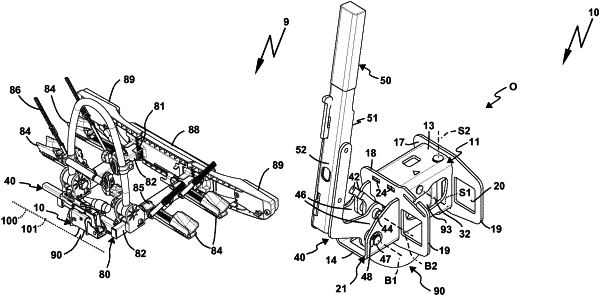|
1. A load carrier coupling for the releasable securing of a rear load carrier, which has a supporting base for placing a load thereon, on a coupling body, configured in particular as a coupling ball, of a motor vehicle trailer coupling, the load carrier coupling comprising: a base which forms the supporting base or is provided for holding the supporting base, wherein a clamping device comprising two clamping parts is arranged on the base and is adjustable by an actuating device between an open position provided for inserting the coupling body into an intermediate space between the clamping parts and for removing the coupling body from the intermediate space and a clamping position provided for clamping the coupling body, wherein the clamping parts are at a greater distance from each other in the open position for the insertion and removal of the coupling body than in the clamping position, wherein at least one of the clamping parts is mounted movably with respect to a stop surface using a bearing arrangement having at least two degrees of freedom of movement which differ from one another, and therefore said clamping part is adjustable by the coupling body, which is supported on the other clamping part, for alignment with the coupling body during a final portion of movement of the clamping device in order to take up the clamping position with respect to the stop surface, wherein the at least one stop surface and the bearing arrangement are arranged on a force transmission element of the actuating device.
|
